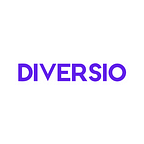What is a Chief Diversity and Inclusion Officer?
With diversity and inclusion becoming an increasingly prominent concern for investors, consumers, employees and corporate leaders, it’s no wonder that a number of companies have taken to hiring a diversity and inclusion lead. Also known as a Chief Diversity and Inclusion Officer (CDIO), a VP of Diversity and Inclusion, or a DEI Officer, these leaders are responsible for overseeing the development of a fair and equitable workplace, from the recruiting and hiring pipeline to employee experience and workplace culture. The role was popularized in the face of scandals from major technology companies like Uber and Google, where workplace harassment issues led employees to speak out against company leadership.
The Chief Diversity and Inclusion Officer role can be broken down into three key components: hiring and recruiting, employee experience and workplace culture, and stakeholder management. First, on the hiring side, the CDIO’s office is in charge of creating a fair application and interview process for future employees, sourcing a diverse variety of candidates — including those from underrepresented backgrounds, and ensuring the organization’s commitment to diversity and inclusion is represented throughout the hiring process.
When it comes down to employee experience and workplace culture, our team at Diversio identified a set of five key metrics which inclusive organizations scored well on. These metrics were identified using our internal data as well as public data on 20,000+ companies across 30 countries worldwide. In the CDIO role, managing these five key inclusion metrics is key. They are listed as follows, and can be explored in further detail in Diversio’s report, How to Measure Inclusion at Your Organization:
- Inclusive culture: The openness of team environments to diverse opinions and perspectives.
- Fair management: An employee feedback and review system that is fair, objective, and free from unconscious bias
- Career development: A culture of mentorship and sponsorship that allows all employees to thrive, regardless of their background
- Flex work: A workplace with an openness to flexible working arrangements, that does not inadvertently exclude diverse employees through rigid protocols.
- Safe work: A workplace free from mental, physical, and sexual harassment
Finally, the CDIO has the responsibility to make sure the organization’s commitment to D&I is communicated to prospective employees and the broader public community. In order to achieve this, the CDIO can use an array of strategies, including releasing an annual company-wide diversity and inclusion report, publicizing employee resources and affinity groups, and supporting diverse community events. This final step is a crucial part of stakeholder management, which helps organizations build a positive public brand image with consumers and investors, as well as prospective employees.
At the end of the day, an increasing number of businesses and organizations are embracing the CDIO role for good reason. In a world that is more diverse than ever, organizations need diversity and inclusion to succeed. While most companies may already have a Chief Human Resources Officer, hiring a designated CDIO with a direct reporting line to the CEO is a solid next step, especially for larger organizations with over 1000 employees. There is no easy end-all-be-all solution for D&I, but having a designated CDIO ensures that organizations can strive for progress on the D&I front.
